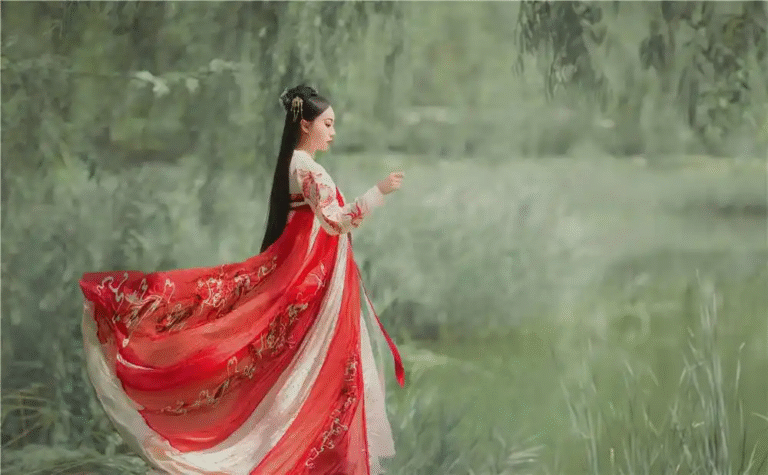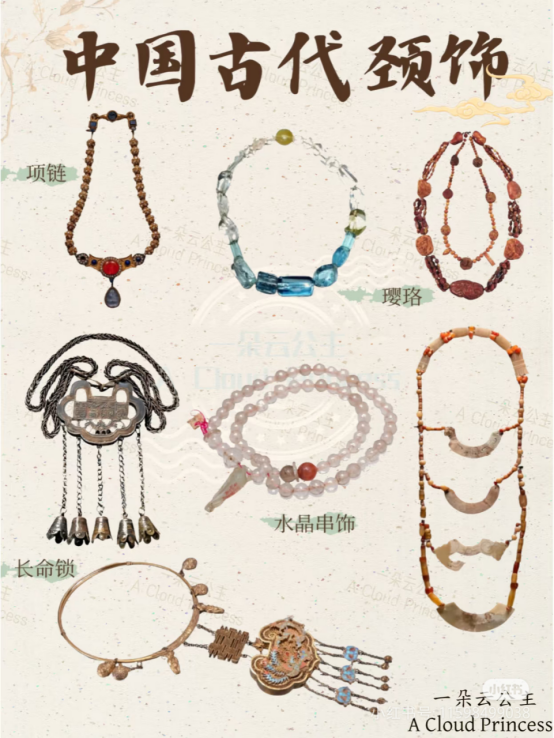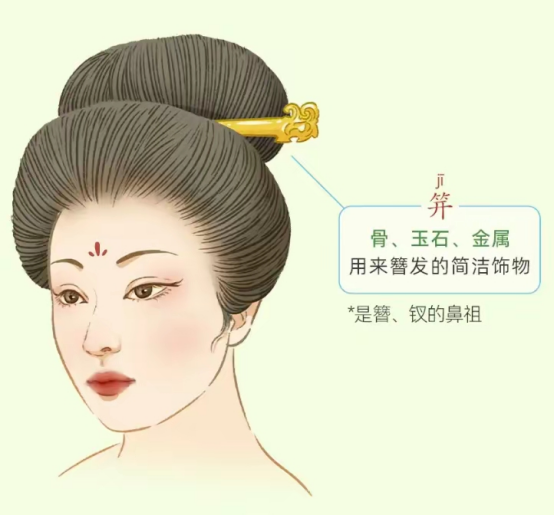China has a vast territory and numerous cultural treasures, and the Han traditional clothing, “Hanfu“, is a highly representative one among them. The evolution of women’s Hanfu is an important source of the development of clothing culture and a symbol of cultural confidence. From the unearthed clothing, it can be seen that the aesthetic tastes of the ancients kept changing with the dynastic changes, especially in the four dynasties of Wei and Jin, Tang, Song, and Ming, which were the key development periods of women’s Hanfu. They carry unique characteristics and cultural symbols of the times. Women’s Hanfu integrates the traditional aesthetics of thousands of years and has diverse styles. It can not only set off the temperament but also show the cultural connotation, so it is highly loved. Now let’s enter different dynasties and feel the unique charm of women’s Hanfu.

Women’s Hanfu in the Wei and Jin Dynasties
The Wei and Jin Dynasties were an era of frequent turbulence, but due to cultural collisions, a unique clothing style was bred. “Wei and Jin Fengliu” can exactly summarize the clothing characteristics of this period. The common combination of Jin – system Hanfu is a one – piece broken skirt + long – sleeved cross – collar upper ru . A loose upper ru or banbi will also be worn on the upper body. The overall shape is elegant and has a distinct brand of the times.

Women’s Hanfu in the Tang Dynasty
The Tang Dynasty was a time when the country was powerful and ideas were open. Influenced by the Silk Road, women’s Hanfu absorbed elements of the Hu people, and the shape was more bold and heroic. At that time, the Qixiong Ruqun was popular, matched with a cross – collar or front – opening upper ru, and supplemented with a thin pibo . When moving, it was like flowing clouds and running water. In the prosperous Tang Dynasty, the Tanling Ruqun emerged, and the collar gradually became lower, perfectly showing the curvy figure of women.

Women’s Hanfu in the Song Dynasty
The style of the Song Dynasty tended to be introverted and implicit, and women’s Hanfu also exuded the integrity of literati. Its basic shape followed the Tang system, but the details were adjusted. For example, the upper ru was shortened to the bra – like undergarment part. The common combination was pleated skirt + long coat. It fully showed the shy and charming temperament of women.

Women’s Hanfu in the Ming Dynasty
In the Ming Dynasty, there is a saying that “it began with Qixiong and was loyal to the Ming system”. Ming – system Hanfu can be called the master of ancient Hanfu. It absorbed elements from previous dynasties and was also influenced by Confucianism in the Ming Dynasty. The overall style was magnificent and dignified. The common shape was shirt and jacket + mamian skirt . There were rich collar styles, and it could also be matched with bijia. It showed the elegant and generous temperament of women incisively and vividly.

From the elegant broken skirt in the Wei and Jin Dynasties to the gorgeous Qixiong Ruqun in the Tang Dynasty, from the simple and elegant beizi in the Song Dynasty to the exquisite jacket and skirt in the Ming Dynasty, the evolution of women’s Hanfu is not only a change in aesthetics but also a microcosm of the social structure and cultural trend. Nowadays, the revival of Hanfu has brought traditional clothing back to the public view. What people pursue is not only the beauty of clothes but also the inheritance of cultural roots. As the Book of Rites said: “China has great etiquette, so it is called Xia; it has the beauty of clothing and decoration, so it is called Hua.” The thousand – year – old neon clothes will eventually become a bright footnote of Chinese civilization.







